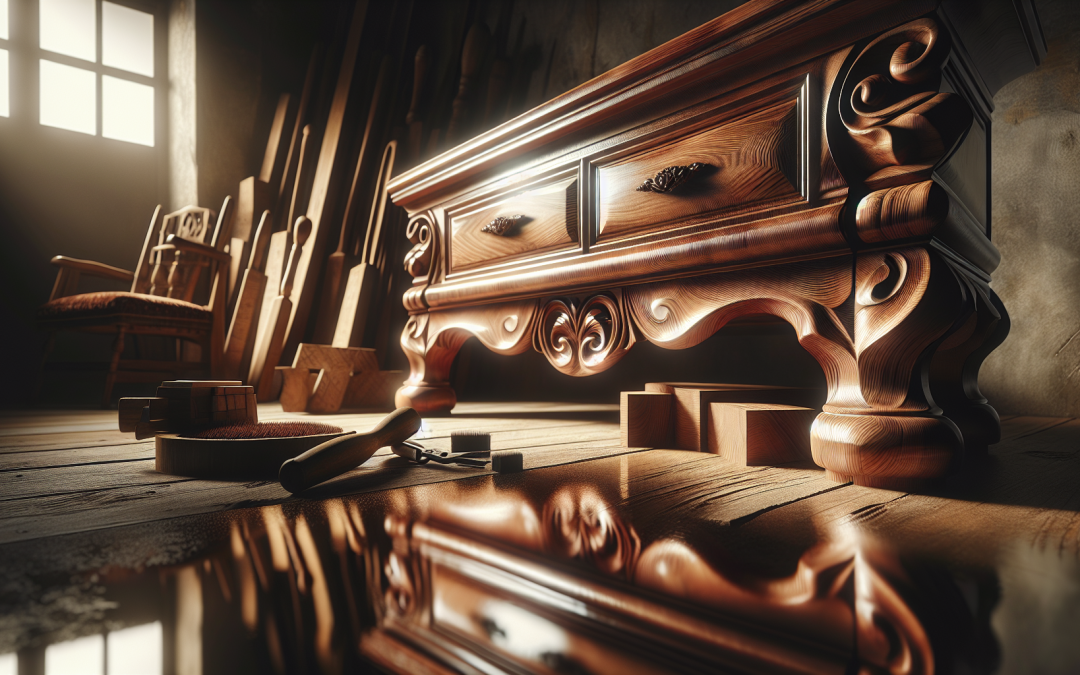The captivating art of woodworking, passed down through generations, has been integral in shaping the landscape of our heritage. Merge the allure of handcrafted furniture with the timeless French polishing technique, and you’ll delve into a passion that stood the test of time. But what exactly is French polishing and how can you employ its age-old methods to create stunning heirloom furniture? Let’s journey together and explore.
Mastering the French Polishing Technique
Initially popularized in the 18th century, French polishing is a wood finishing technique that bestows furniture with a high-gloss finish. It gained prominence because of its exceptional ability to highlight woods’ beautiful grains. Unlike other finishing techniques, French polishing is tedious and time-consuming but is worth every minute invested.
The first step in mastering French polishing lies in being well-equipped. French polishing mainly involves the use of a cotton rag padded with shellac. The process is repeated many times to develop thin layers of shellac on the wood surface, culminating in a velvety touch and brilliant shine.
Starting with a well-prepared surface is vital in this process. In our post on how to create smooth finishes that last, you will find valuable recommendations on preparing wood surfaces and protecting your project, which are fundamental to French polishing.
Avoid Common Woodworking Mistakes
Before diving headfirst into practicing French Polishing, it is critical to comprehend the common errors that woodworkers make. Knowing these pitfalls can help you steer clear of them, therefore assuring a better and smoother finish. In our post titled Common Woodworking Mistakes and How to Avoid Them, we discuss in great detail the frequent errors we make, and how to prevent them.
Whether they are poor measurements or incorrect tool usage, these mistakes could be what stands between you and a perfectly polished piece. And it is essential to remember that even though machines save our time, they cannot offer the intricacy that manual hand tools, like the ones we describe in Reviving Traditional Woodworking Tools, can provide.
Joinery Techniques for French Polishing
The beauty of French polished surfaces is further enhanced when combined with classic joinery methods. Among these, dovetails and mortise-and-tenon techniques stand out due to their strength, aesthetics, and practical uses. These methods ensure durable and robust furniture that lasts generations, making them desirable for the creation of heirloom pieces.
You can find a detailed exploration of these techniques in our article Joinery Techniques Explained: From Dovetails to Mortise and Tenon. Remember, executing these techniques require some basic tools, for example, a chisel, and a good understanding of how these methods work.
Embrace the Art of Wood Movement
Working with wood is an art – and an intricate part of that art lies in undestanding and working with wood movement. Wood absorbs and expels moisture as the atmospheric humidity fluctuates, causing it to expand and contract – a phenomenon known as wood movement. A deep understanding of this phenomenon is crucial while applying techniques like French polishing.
We invite you to further enhance your woodworking skills by reading our blog post on the Science of Understanding Wood Movement.
Bringing it all together for a Perfect Finish
Bringing all these tips and techniques together, your journey to creating an exquisite French polished heirloom piece is looking promising. Regardless of which wood type you opt for, whether it’s oak, mahogany, or walnut, understanding their unique properties will enable you to apply these knowledge elements in perfect harmony.
We delve into the properties of these distinct wood types in our post Understanding different types of wood for your projects.
Enjoy the process, learn from your mistakes, and never cease to experiment. After all, perfecting French polishing and creating heirloom quality pieces is not a task to finish but a journey to enjoy.
When the last layer of the French polish takes its place, you’ll know that every endeavor was worthwhile. And just like that, you’re one step closer to becoming a master woodworker, honing your craft, and creating timeless, heirloom pieces that future generations will cherish.

